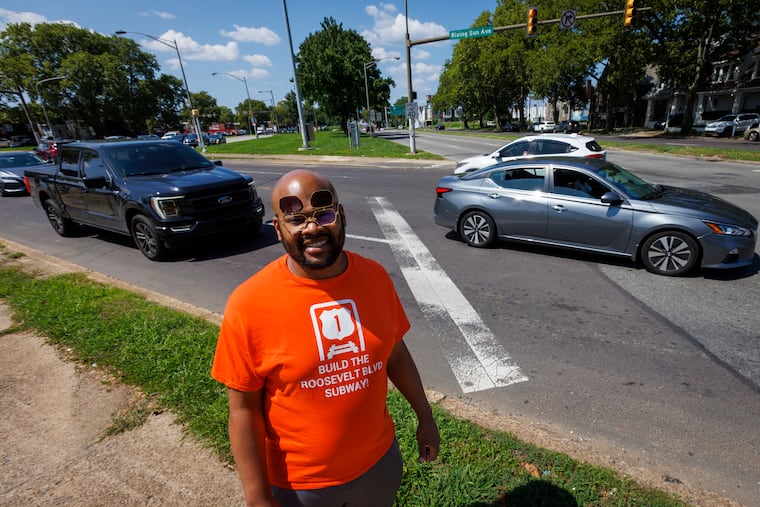It’s time to break the gridlock on ‘Roosevelt Boulevard Reimagined’
The Roosevelt Boulevard Reimagined plan is more than a transit initiative, it’s a test of Philadelphia’s ability to deliver transformative infrastructure, writes Jay Arzu.

Last week, I attended the virtual “Roosevelt Boulevard Reimagined” briefing, organized for community stakeholders, registered community organizations, nonprofits, and advocacy groups by the Pennsylvania Department of Transportation (PennDot).
The meeting served as a platform to discuss the transformative potential of reimagining Roosevelt Boulevard and the opportunity to look at different transit alternatives, including the long-awaited Roosevelt Boulevard subway. But what the meeting highlighted was a serious shortcoming in PennDot’s thinking — its high cost projections based on an unwillingness to adopt modern construction techniques.
While the federal Environmental Impact Statement process aims to streamline projects within a two-year time frame, PennDot’s proposed construction schedule — pushing completion to 2040 — feels deeply out of step with the urgency of the situation. Northeast Philadelphia deserves safer roads, a modern subway line, and a clear, actionable plan to achieve progress, rather than being mired in perpetual delays.
For Northeast Philadelphia, the stakes are high. This corridor has endured 111 years of unmet promises for a subway.
The cost discrepancies among alternatives raise serious questions about efficiency and feasibility. For example, according to numbers presented by PennDot at the stakeholder meeting of Nov. 18, the “Neighborhood Boulevard” subway option, which offers the highest ridership potential at 62,000 daily trips, is estimated to cost $11 billion. Meanwhile, the most expensive alternative, a capped expressway with a subway, reaches a staggering $15.3 billion. In stark contrast, Bus Rapid Transit (BRT) alternatives, at $1.8 billion, deliver ridership ranging from 31,000 to 38,500, while Light Rail Transit (LRT) options, costing $5.4 billion to $9.5 billion, attract a projected ridership of 36,500 to 56,400.
While subways offer unparalleled capacity and connectivity, these inflated costs threaten the Roosevelt Boulevard subway’s feasibility.
However, one critical limitation of the BRT and LRT options is that they fail to provide one-seat rides to Center City or the stadiums in South Philadelphia. Riders using these systems would need to transfer to other transit modes, adding inconvenience, time, and complexity to their commutes.
» READ MORE: What I wish for in 2024: The Roosevelt Boulevard subway | Opinion
In contrast, the Roosevelt Boulevard subway would deliver seamless, direct access to these critical destinations because it would connect to the Broad Street Line’s Express Tracks, making it a far more appealing option for commuters, event-goers, and travelers along the Roosevelt Boulevard corridor. This one-seat ride capability is essential for attracting and sustaining high ridership, directly impacting the overall user experience.
A key factor driving up the estimated costs of the subway alternatives is PennDot’s reliance on tunneling with tunnel-boring machines. While effective in densely developed urban areas or for minimizing surface disruptions, this method is unnecessarily expensive for Roosevelt Boulevard’s 80-foot median, which is ideally suited for cut-and-cover subway construction.
Prefabrication methods — which have been successfully implemented in Changchun, China — provide a compelling case for reconsidering construction techniques.
Using modular components fabricated off-site and assembled on-site, Changchun built six prefabricated metro stations efficiently, reducing construction time, labor costs, and environmental impacts. These techniques have also been applied in Europe, Japan, and South Korea, demonstrating their global viability and effectiveness in urban rail projects.
The funding and technical tools exist; what’s lacking is political resolve and urgency to pressure PennDot to pick up the pace.
Internationally, cut-and-cover methods have been used to construct high-capacity subway systems in wide boulevards or open spaces. The method involves excavating a trench, building the subway structure, and then covering it back over, which allows for more straightforward construction and minimizes reliance on costly machinery like tunnel-boring machines. Paired with prefabricated modules, this approach dramatically reduces the time and cost of building underground transit systems.
For Roosevelt Boulevard, prefabrication and cut-and-cover could make subway construction far more attainable, offering Philadelphia a chance to develop world-class infrastructure at a fraction of PennDot’s estimated costs.
» READ MORE: Philadelphians have waited over a century for the Roosevelt Boulevard subway | Opinion
For Northeast Philadelphia, the stakes are high. This corridor has endured 111 years of unmet promises for a subway. The funding and technical tools exist; what’s lacking is political resolve and urgency to pressure PennDot to pick up the pace.
Philadelphia must lead with visionary planning, leveraging lessons from other cities, embracing innovative construction methods, and aligning the project with the community’s needs. The Roosevelt Boulevard Reimagined plan is more than a transit initiative — it’s a test of Philadelphia’s ability to deliver transformative infrastructure.
By addressing cost inefficiencies, diversifying funding, and adopting modern construction techniques, we can make the subway alternative viable. Northeast Philadelphia has waited long enough. It’s time to deliver.
Jay Arzu began his doctorate in city and regional planning at the University of Pennsylvania Stuart Weitzman School of Design in fall 2021. Arzu is the cofounder of the Collective Form, a walkable urbanism and community engagement platform.